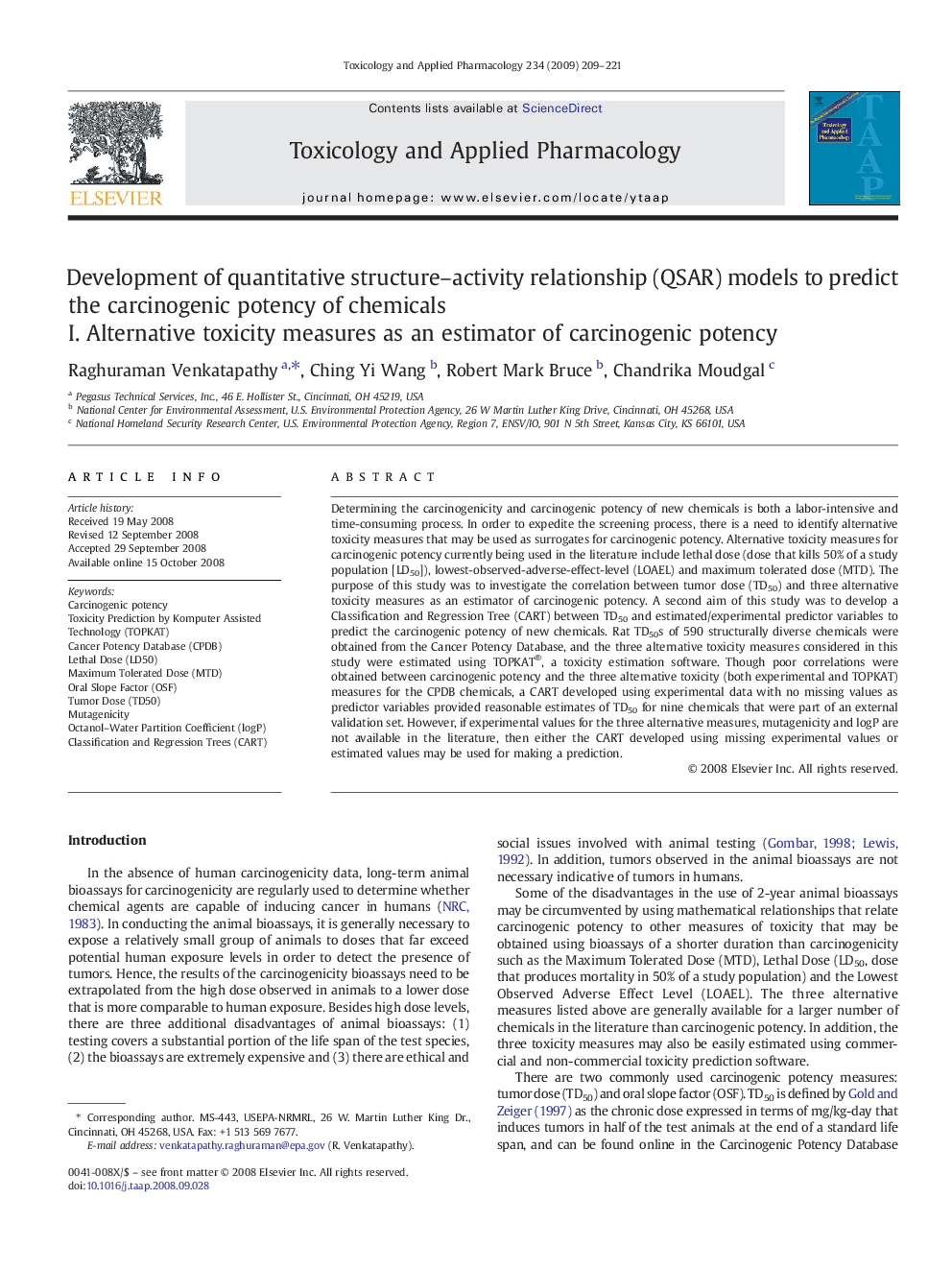| Article ID | Journal | Published Year | Pages | File Type |
|---|---|---|---|---|
| 2570765 | Toxicology and Applied Pharmacology | 2009 | 13 Pages |
Determining the carcinogenicity and carcinogenic potency of new chemicals is both a labor-intensive and time-consuming process. In order to expedite the screening process, there is a need to identify alternative toxicity measures that may be used as surrogates for carcinogenic potency. Alternative toxicity measures for carcinogenic potency currently being used in the literature include lethal dose (dose that kills 50% of a study population [LD50]), lowest-observed-adverse-effect-level (LOAEL) and maximum tolerated dose (MTD). The purpose of this study was to investigate the correlation between tumor dose (TD50) and three alternative toxicity measures as an estimator of carcinogenic potency. A second aim of this study was to develop a Classification and Regression Tree (CART) between TD50 and estimated/experimental predictor variables to predict the carcinogenic potency of new chemicals. Rat TD50s of 590 structurally diverse chemicals were obtained from the Cancer Potency Database, and the three alternative toxicity measures considered in this study were estimated using TOPKAT®, a toxicity estimation software. Though poor correlations were obtained between carcinogenic potency and the three alternative toxicity (both experimental and TOPKAT) measures for the CPDB chemicals, a CART developed using experimental data with no missing values as predictor variables provided reasonable estimates of TD50 for nine chemicals that were part of an external validation set. However, if experimental values for the three alternative measures, mutagenicity and logP are not available in the literature, then either the CART developed using missing experimental values or estimated values may be used for making a prediction.
